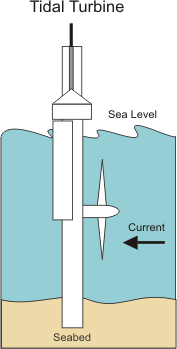|
How do we get power from the tides?
There are also three main ways that tidal energy is harnessed:
|
 |
|
Environmental Issues
Land Pollution Air Pollution Water Pollution Ozone Layer Recycling Global Warming |
Renewable Energy Sources
Renewable Energy Biomass Energy Geothermal Energy Hydropower Solar Power Wave and Tidal Energy Wind Power |